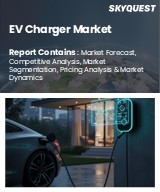
|
시장보고서
상품코드
1738076
마일드 하이브리드 자동차 시장 규모, 점유율, 성장 분석 : 용량별, 차량별, 배터리별, 지역별 - 산업 예측(2025-2032년)Mild Hybrid Vehicles Market Size, Share, and Growth Analysis, By Capacity (Less than 48V, 48 V and above), By Vehicle (Passenger cars, Commercial vehicles), By Battery, By Region - Industry Forecast 2025-2032 |
||||||
마일드 하이브리드 자동차 세계 시장 규모는 2023년에 1,012억 달러로 평가되었으며, 2024년 1,197억 2,000만 달러에서 2032년에는 4,592억 4,000만 달러로 성장하고, 예측 기간(2025-2032년) 동안 CAGR 18.3%로 성장할 전망입니다.
마일드 하이브리드 자동차 시장은 자동차 제조업체와 소비자들이 전기자동차로 완전히 전환하지 않고도 연비를 개선하고 배기가스 배출을 줄이기 위해 비용 효율적인 솔루션을 우선시하는 경향이 강화됨에 따라 강력한 성장을 목격하고 있습니다. 소형 전기 모터와 48V 배터리를 장착한 마일드 하이브리드는 다양한 주행 상황에서 기존 엔진을 보조하여 연비를 개선하고 CO2 배출량을 줄이는 데 도움을 줍니다. 이 기술은 기존 내연기관 엔진과 완전 전기화 시스템 사이의 과도기적 대안으로 작용하여 환경 규제를 극복하고자 하는 제조업체들에게 어필할 수 있습니다. 주요 성장 촉진요인으로는 정부 인센티브, 지속가능한 교통수단에 대한 소비자의 인식 증가, 풀 하이브리드 및 전기자동차에 비해 마일드 하이브리드의 저렴한 가격 등이 있습니다. 엄격한 배기가스 규제로 인해 유럽이 채택을 주도하고 있는 반면, 아시아태평양과 북미는 도시화와 경제적인 그린 모빌리티 솔루션에 대한 수요에 힘입어 높은 성장 잠재력을 보이고 있습니다.
목차
소개
- 조사 목적
- 조사 범위
- 정의
조사 방법
- 정보 조달
- 2차와 1차 데이터 방법
- 시장 규모 예측
- 시장 가정과 제한
주요 요약
- 세계 시장 전망
- 공급과 수요 동향 분석
- 부문별 기회 분석
시장 역학과 전망
- 시장 개요
- 시장 규모
- 시장 역학
- 성장 촉진요인과 기회
- 성장 억제요인과 과제
- Porters 분석
주요 시장 인사이트
- 핵심성공요인
- 경쟁 정도
- 주요 투자 기회
- 시장 생태계
- 시장 매력 지수(2024년)
- PESTEL 분석
- 거시경제 지표
- 밸류체인 분석
- 가격 분석
마일드 하이브리드 자동차 시장 규모 : 용량별 & CAGR(2025-2032년)
- 시장 개요
- 48V 미만
- 48V 이상
마일드 하이브리드 자동차 시장 규모 : 차량별 & CAGR(2025-2032년)
- 시장 개요
- 승용차
- 48V 미만
- 48V 이상
- 상용차
- 48V 미만
- 48V 이상
마일드 하이브리드 자동차 시장 규모 : 배터리별 & CAGR(2025-2032년)
- 시장 개요
- 리튬이온
- 납축배터리
- 기타
마일드 하이브리드 자동차 시장 규모 : 지역별 & CAGR(2025-2032년)
- 북미
- 미국
- 캐나다
- 유럽
- 독일
- 스페인
- 프랑스
- 영국
- 이탈리아
- 기타 유럽
- 아시아태평양
- 중국
- 인도
- 일본
- 한국
- 기타 아시아태평양
- 라틴아메리카
- 브라질
- 기타 라틴아메리카
- 중동 및 아프리카
- GCC 국가
- 남아프리카공화국
- 기타 중동 및 아프리카
경쟁 정보
- 상위 5개사의 비교
- 주요 기업의 시장 포지셔닝(2024년)
- 주요 시장 기업이 채용한 전략
- 최근의 시장 동향
- 기업의 시장 점유율 분석(2024년)
- 주요 기업 개요
- 기업 상세
- 제품 포트폴리오 분석
- 기업 부문별 점유율 분석
- 매출 전년비 비교(2022-2024년)
주요 기업 개요
- Toyota Motor Corporation(Japan)
- Volkswagen AG(Germany)
- Honda Motor Co., Ltd.(Japan)
- Hyundai Motor Company(South Korea)
- Kia Motors Corporation(South Korea)
- Suzuki Motor Corporation(Japan)
- Daimler AG(Germany)
- Volvo Group(Sweden)
- BMW AG(Germany)
- Ford Motor Company(USA)
- Audi AG(Germany)
- Mitsubishi Motors Corporation(Japan)
- General Motors(USA)
- Stellantis N.V.(Netherlands)
- BYD Co. Ltd.(China)
- Geely Automobile Holdings Ltd(China)
- Jaguar Land Rover Ltd(UK)
- Mazda Motor Corporation(Japan)
- Renault(France)
- Subaru Corporation(Japan)
결론과 제안
ksm 25.06.17Global Mild Hybrid Vehicles Market size was valued at USD 101.2 billion in 2023 and is poised to grow from USD 119.72 billion in 2024 to USD 459.24 billion by 2032, growing at a CAGR of 18.3% during the forecast period (2025-2032).
The mild hybrid vehicles market is witnessing robust growth as automakers and consumers increasingly prioritize cost-effective solutions aimed at enhancing fuel efficiency and lowering emissions without fully shifting to electric vehicles. Mild hybrids, equipped with a compact electric motor and a 48-volt battery, assist conventional engines during various operations, improving fuel economy and reducing CO2 emissions. This technology serves as a transitional option between traditional combustion engines and fully electrified systems, appealing to manufacturers navigating environmental regulations. Key growth drivers include government incentives, rising consumer awareness of sustainable transportation, and the affordability of mild hybrids compared to full hybrids and EVs. While Europe leads in adoption due to rigorous emission standards, Asia Pacific and North America exhibit strong growth potential fueled by urbanization and demand for economical green mobility solutions.
Top-down and bottom-up approaches were used to estimate and validate the size of the Global Mild Hybrid Vehicles market and to estimate the size of various other dependent submarkets. The research methodology used to estimate the market size includes the following details: The key players in the market were identified through secondary research, and their market shares in the respective regions were determined through primary and secondary research. This entire procedure includes the study of the annual and financial reports of the top market players and extensive interviews for key insights from industry leaders such as CEOs, VPs, directors, and marketing executives. All percentage shares split, and breakdowns were determined using secondary sources and verified through Primary sources. All possible parameters that affect the markets covered in this research study have been accounted for, viewed in extensive detail, verified through primary research, and analyzed to get the final quantitative and qualitative data.
Global Mild Hybrid Vehicles Market Segments Analysis
Global Mild Hybrid Vehicles Market is segmented by Capacity, Vehicle, Battery and region. Based on Capacity, the market is segmented into Less than 48V and 48 V and above. Based on Vehicle, the market is segmented into Passenger cars and Commercial vehicles. Based on Battery, the market is segmented into Lithium-ion, Lead Acid and Others. Based on region, the market is segmented into North America, Europe, Asia Pacific, Latin America and Middle East & Africa.
Driver of the Global Mild Hybrid Vehicles Market
A significant factor contributing to the growth of the global mild hybrid vehicles (MHV) market is the heightened international emphasis on minimizing carbon emissions. Governments in regions such as Europe, North America, and Asia have implemented stricter fuel efficiency regulations and emissions targets to align with environmental objectives outlined in agreements like the Paris Accord. Mild hybrid technology plays a crucial role in meeting these standards by integrating a small electric motor that supports the internal combustion engine (ICE), thereby decreasing its workload and enhancing overall fuel efficiency. This innovative approach not only reduces environmental impact but also promotes sustainable transportation solutions.
Restraints in the Global Mild Hybrid Vehicles Market
A significant drawback of mild hybrid vehicles (MHVs) is the inherent technical limitation that the electric motor cannot operate the vehicle independently; it solely supports the gasoline or diesel engine during specific conditions, such as during acceleration or when idling. As a result, MHVs continue to rely on fossil fuels for almost all their driving time, which diminishes their attractiveness in urban areas striving for zero-emission zones. In comparison, full hybrids, plug-in hybrids, and battery electric vehicles (BEVs) provide greater electric-only driving capabilities, which are increasingly becoming a requirement for fleet vehicles in various municipalities, further limiting the appeal of MHVs.
Market Trends of the Global Mild Hybrid Vehicles Market
The global mild hybrid vehicles market is witnessing a significant trend with the widespread adoption of 48-Volt electrical architectures. This transition from traditional 12V systems enhances vehicle performance and efficiency, allowing for advanced features such as electric turbochargers, improved start-stop systems, and superior regenerative braking. Furthermore, this shift supports the integration of more powerful infotainment systems and air conditioning, elevating passenger comfort. Major automakers like Audi, Mercedes-Benz, and Hyundai have begun incorporating 48V mild hybrid electric vehicles (MHEVs) into their 2024 lineups, highlighting the swift industry adaptation and the growing demand for more efficient, technologically advanced vehicles in the market.
Table of Contents
Introduction
- Objectives of the Study
- Scope of the Report
- Definitions
Research Methodology
- Information Procurement
- Secondary & Primary Data Methods
- Market Size Estimation
- Market Assumptions & Limitations
Executive Summary
- Global Market Outlook
- Supply & Demand Trend Analysis
- Segmental Opportunity Analysis
Market Dynamics & Outlook
- Market Overview
- Market Size
- Market Dynamics
- Drivers & Opportunities
- Restraints & Challenges
- Porters Analysis
- Competitive rivalry
- Threat of substitute
- Bargaining power of buyers
- Threat of new entrants
- Bargaining power of suppliers
Key Market Insights
- Key Success Factors
- Degree of Competition
- Top Investment Pockets
- Market Ecosystem
- Market Attractiveness Index, 2024
- PESTEL Analysis
- Macro-Economic Indicators
- Value Chain Analysis
- Pricing Analysis
Global Mild Hybrid Vehicles Market Size by Capacity & CAGR (2025-2032)
- Market Overview
- Less than 48V
- 48 V and above
Global Mild Hybrid Vehicles Market Size by Vehicle & CAGR (2025-2032)
- Market Overview
- Passenger cars
- Less than 48V
- 48 V and above
- Commercial vehicles
- Less than 48V
- 48 V and above
Global Mild Hybrid Vehicles Market Size by Battery & CAGR (2025-2032)
- Market Overview
- Lithium-ion
- Lead Acid
- Others
Global Mild Hybrid Vehicles Market Size & CAGR (2025-2032)
- North America (Capacity, Vehicle, Battery)
- US
- Canada
- Europe (Capacity, Vehicle, Battery)
- Germany
- Spain
- France
- UK
- Italy
- Rest of Europe
- Asia Pacific (Capacity, Vehicle, Battery)
- China
- India
- Japan
- South Korea
- Rest of Asia-Pacific
- Latin America (Capacity, Vehicle, Battery)
- Brazil
- Rest of Latin America
- Middle East & Africa (Capacity, Vehicle, Battery)
- GCC Countries
- South Africa
- Rest of Middle East & Africa
Competitive Intelligence
- Top 5 Player Comparison
- Market Positioning of Key Players, 2024
- Strategies Adopted by Key Market Players
- Recent Developments in the Market
- Company Market Share Analysis, 2024
- Company Profiles of All Key Players
- Company Details
- Product Portfolio Analysis
- Company's Segmental Share Analysis
- Revenue Y-O-Y Comparison (2022-2024)
Key Company Profiles
- Toyota Motor Corporation (Japan)
- Company Overview
- Business Segment Overview
- Financial Updates
- Key Developments
- Volkswagen AG (Germany)
- Company Overview
- Business Segment Overview
- Financial Updates
- Key Developments
- Honda Motor Co., Ltd. (Japan)
- Company Overview
- Business Segment Overview
- Financial Updates
- Key Developments
- Hyundai Motor Company (South Korea)
- Company Overview
- Business Segment Overview
- Financial Updates
- Key Developments
- Kia Motors Corporation (South Korea)
- Company Overview
- Business Segment Overview
- Financial Updates
- Key Developments
- Suzuki Motor Corporation (Japan)
- Company Overview
- Business Segment Overview
- Financial Updates
- Key Developments
- Daimler AG (Germany)
- Company Overview
- Business Segment Overview
- Financial Updates
- Key Developments
- Volvo Group (Sweden)
- Company Overview
- Business Segment Overview
- Financial Updates
- Key Developments
- BMW AG (Germany)
- Company Overview
- Business Segment Overview
- Financial Updates
- Key Developments
- Ford Motor Company (USA)
- Company Overview
- Business Segment Overview
- Financial Updates
- Key Developments
- Audi AG (Germany)
- Company Overview
- Business Segment Overview
- Financial Updates
- Key Developments
- Mitsubishi Motors Corporation (Japan)
- Company Overview
- Business Segment Overview
- Financial Updates
- Key Developments
- General Motors (USA)
- Company Overview
- Business Segment Overview
- Financial Updates
- Key Developments
- Stellantis N.V. (Netherlands)
- Company Overview
- Business Segment Overview
- Financial Updates
- Key Developments
- BYD Co. Ltd. (China)
- Company Overview
- Business Segment Overview
- Financial Updates
- Key Developments
- Geely Automobile Holdings Ltd (China)
- Company Overview
- Business Segment Overview
- Financial Updates
- Key Developments
- Jaguar Land Rover Ltd (UK)
- Company Overview
- Business Segment Overview
- Financial Updates
- Key Developments
- Mazda Motor Corporation (Japan)
- Company Overview
- Business Segment Overview
- Financial Updates
- Key Developments
- Renault (France)
- Company Overview
- Business Segment Overview
- Financial Updates
- Key Developments
- Subaru Corporation (Japan)
- Company Overview
- Business Segment Overview
- Financial Updates
- Key Developments



















